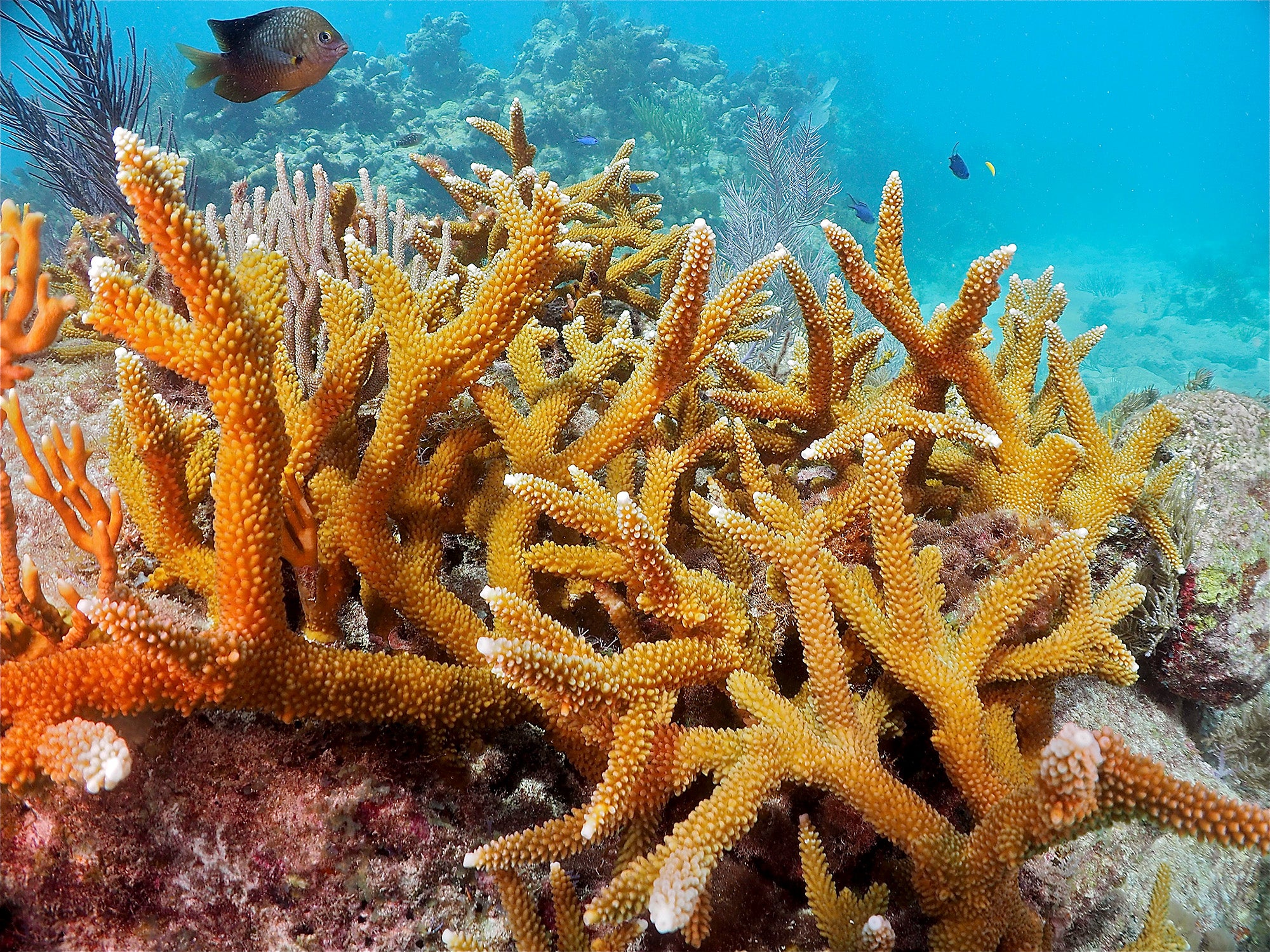The Race to Save Corals at North America’s Only Barrier Reef
The fates of corals and humans are intertwined. Corals provide the highest biodiversity of any global ecosystem, and are among the Earth’s most threatened.
It’s the beginning of the spawning season for corals in the Florida Keys National Marine Sanctuary, cued by the full moon in the first week of August. It should be a time of renewal and bounty. But with water temperatures hitting a hot 101 degrees Fahrenheit, it’s a time of crisis. Those unprecedented hot temperatures are driving a mass coral bleaching event that could kill off parts of North America’s only coral barrier reef. There is so much at stake.
People who care about the reef are mobilizing in the midst of this ecological emergency. Scientists and divers are racing to the scene of what they believe may be the largest-ever coral bleaching disaster. They are scrambling to collect corals and bring them back to Florida labs to try to keep the corals alive while record-smashing summer temperatures from climate change turn Florida’s waters into a hot tub. They hope to save enough specimens, enough genetic material, to keep species going.
Let’s sit with this for a moment: We’ve heated the planet to the point where the only way to save some corals is to take them out of the ocean. In an era filled with climate wake-up calls — wildfires, flooding, droughts — this one still leaves me reeling.
The fates of corals and humans are intertwined. Corals provide the highest biodiversity of any global ecosystem, and are among the Earth’s most threatened. They protect coastlines from getting battered by storms, and are central to Florida’s ocean tourism industries. That’s no doubt why the Discovery channel’s new recreational diving show is featuring the Florida Keys — one of the world’s top diving destinations. The reef boosts Florida’s economy by an estimated $1.1 billion per year.
Corals are fascinating ocean engineers, building 3-D structures which provide habitat to over a quarter of all marine species on Earth. Seeing a healthy coral reef feels like visiting a vibrant city. Peering below a coral shelf or between coral branches, you witness all the daily dramas of neighbors bickering over space, couples courting, parents sheltering their young, predators hunting, and prey tucking out of view. They are magical places. We can’t have healthy oceans without them. And we can’t have healthy human communities without healthy oceans.
Despite their stony appearance, corals are actually animals, similar to little anemones, that live in giant colonies that form what we see as mounds or branches of coral. They coexist with algae, which lives and photosynthesizes inside the coral’s gut. That process provides nutrition and is responsible for corals’ bright, alluring colors. When water temperatures get too high, corals get stressed and expel this essential algae from their bodies. The coral can survive bleaching, but it’s starving, weak, and vulnerable to disease and death.
The Florida Barrier Reef Tract has over 40 species of coral and runs 350 miles from just north of Palm Beach on the Atlantic coast, around the tip of Florida and out to the Gulf’s’ Dry Tortugas islands off Key West.
The Florida Reef Tract has already shrunk dramatically due to disease and climate change that’s causing ocean acidification and killing corals outright. The corals also face threats from overfishing and coastal development.
The race to save corals is on and it requires us to use every tool we have. We have to keep working to protect coral reefs from local threats like ill-advised dredging projects and unsustainable fishing. We need to fight fossil fuel development that drives further climate change and we need to promote a just transition to renewable energy. We owe it to the underwater world that sustains us, to our communities, to future generations, to make sure that coral reefs live on in the wild, and not just in labs, on film, or in our memories.
Earthjustice’s Oceans Program uses the power of the law to safeguard imperiled marine life, reform fisheries management, stop the expansion of offshore oil and gas drilling, and increase the resiliency of ocean ecosystems to climate change.
